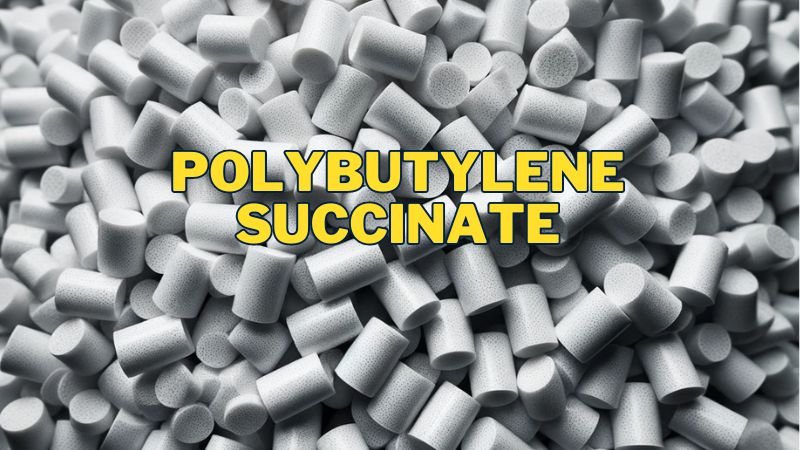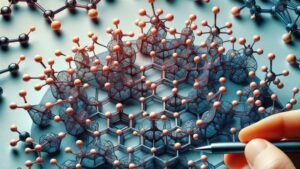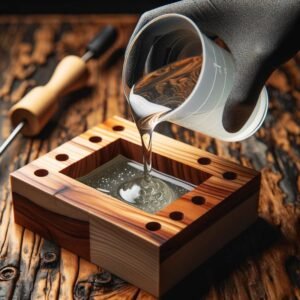Introduction
Polybutylene Succinate (PBS) is not just another plastic; it’s a turning point in sustainable material science. As industries grapple with increasing environmental concerns, the spotlight is on materials that offer functionality without forsaking ecological responsibility. PBS fits this narrative perfectly. This blog post aims to delve into what PBS is, its noteworthy properties, applications, and why it’s earning recognition in various industries.
What is Polybutylene Succinate (PBS)?
Polybutylene Succinate, commonly known as PBS, is an aliphatic polyester with a unique chemical structure that sets it apart from traditional plastics. Unlike common plastics like polyethylene or polypropylene, PBS is made through the polymerization of succinic acid and 1,4-butanediol. This chemical makeup contributes to its mechanical strength and biodegradability.
One of the standout features of PBS is its versatility. It can be processed through conventional plastic manufacturing methods, including injection molding, extrusion, and blow molding. The material also exhibits an excellent balance of tensile strength, thermal stability, and impact resistance. Essentially, PBS brings the best of both worlds: the durability of conventional plastics and the biodegradability of more eco-friendly materials.

Why PBS is Important
In a world increasingly conscious of its environmental impact, PBS serves as a crucial bridge between sustainability and industrial efficacy.
Environmental Benefits
Firstly, PBS is biodegradable. Unlike traditional plastics that take centuries to decompose, PBS can break down much more quickly when exposed to the right conditions. Recent studies have shown that PBS can decompose within a few months under industrial composting conditions, making it a smart choice for single-use products requiring disposability without long-term environmental harm.
Mechanical Properties
PBS isn’t just about being eco-friendly; it also scores high in performance. The material displays good tensile strength, roughly comparable to polyethylene, which makes it durable for everyday use. Its thermal stability allows it to withstand a range of temperatures, often surpassing that of polystyrene, making it versatile across applications. These mechanical virtues make it more than just a ‘green’ alternative; PBS is genuinely robust and can replace traditional plastics in numerous applications without sacrificing quality.
| Property | Polybutylene Succinate (PBS) | Polyethylene (PE) | Polypropylene (PP) | Polystyrene (PS) |
|---|---|---|---|---|
| Tensile Strength (MPa) | 30-40 | 20-40 | 25-35 | 35-55 |
| Flexural Modulus (GPa) | 0.8-1.5 | 0.2-1.5 | 1.5-2.5 | 3.0-3.5 |
| Impact Strength (kJ/m²) | 3-5 | No Break | 3-16 | 2-3 |
| Thermal Stability (°C) | -20 to 115 | -100 to 80 | 0 to 100 | -20 to 95 |
| Glass Transition Temp (°C) | -30 to -20 | -100 to -80 | -10 to 0 | 90-100 |
Applications of PBS
PBS’s unique properties make it highly adaptable across a range of industries and applications. Below are some key areas where PBS is making its mark.
Packaging
With its good tensile strength and biodegradability, PBS is a compelling choice for packaging materials. It’s particularly popular in food packaging where its safety and biodegradable nature offer an edge.
Agricultural Films
PBS’s biodegradability makes it ideal for use in agricultural films. These films can be left to naturally decompose in the field, reducing waste and labor involved in their removal.
Automotive Parts
In an industry moving toward sustainability, PBS finds applications in internal components of vehicles. Its robust mechanical properties make it suitable for parts that require durability and resistance to wear and tear.
Electronics
While not as common, PBS is also explored in the electronics sector for parts like connectors or encasements, combining mechanical prowess with a lesser environmental impact.

Regulatory Compliance
Navigating regulations is a pivotal aspect when selecting materials for any application, and PBS is no exception. Here’s how PBS stacks up against common regulatory standards:
FDA Compliance
In food-related applications, the U.S. Food and Drug Administration (FDA) sets stringent guidelines for material safety. PBS often complies with these, especially the FDA’s Code of Federal Regulations Title 21, making it a safe option for food packaging.
European Standards
PBS also aligns well with European Union standards, often meeting the requirements of the REACH regulations, which are crucial for materials used in various applications across the continent.
ISO Certification
In a testament to its quality, PBS frequently attains ISO certification. This international standard is a mark of quality and consistency, widely recognized across industries.
UL and Other Tests
Other quality tests, like UL (Underwriters Laboratories) standards, are also applicable to PBS, especially when it is used in electronics and automotive parts.
Challenges and Limitations
While PBS offers a plethora of advantages, it’s important to also consider the challenges and limitations that come with its use.
Cost Factors
One of the primary hurdles is the cost. PBS is generally more expensive than traditional plastics. This can be a significant barrier for companies looking to make a full transition to more sustainable materials.
Market Availability
Although PBS is gaining traction, its market penetration is still not as extensive as that of conventional plastics. This limits the options for bulk purchasing or specialized variants of PBS.
Material Compatibility
While PBS does offer good mechanical properties, it may not be suitable for all applications. Certain specialized uses may require properties that PBS doesn’t inherently possess, necessitating blends or modifications that could further increase the cost.

Future of PBS
As we look ahead, the future appears promising for Polybutylene Succinate. Below are some trends and research directions that signify its growing importance.
Upcoming Trends
Bioplastics are the future, and PBS is a frontrunner in this transition. Market reports suggest a steady growth in the demand for PBS in the coming years, particularly in food packaging and automotive industries.
Research Directions
Ongoing research is focused on enhancing the mechanical properties of PBS through blends and composites, making it even more versatile. Efforts are also underway to bring down production costs, making it more accessible for wider industry adoption.
Conclusion
Polybutylene Succinate (PBS) is an increasingly important material, blending mechanical strength with ecological consciousness. From its chemical makeup to its versatility and applications, PBS offers a balanced solution to many of the challenges industries face today. As environmental concerns escalate, the role of sustainable materials like PBS will only become more crucial.





